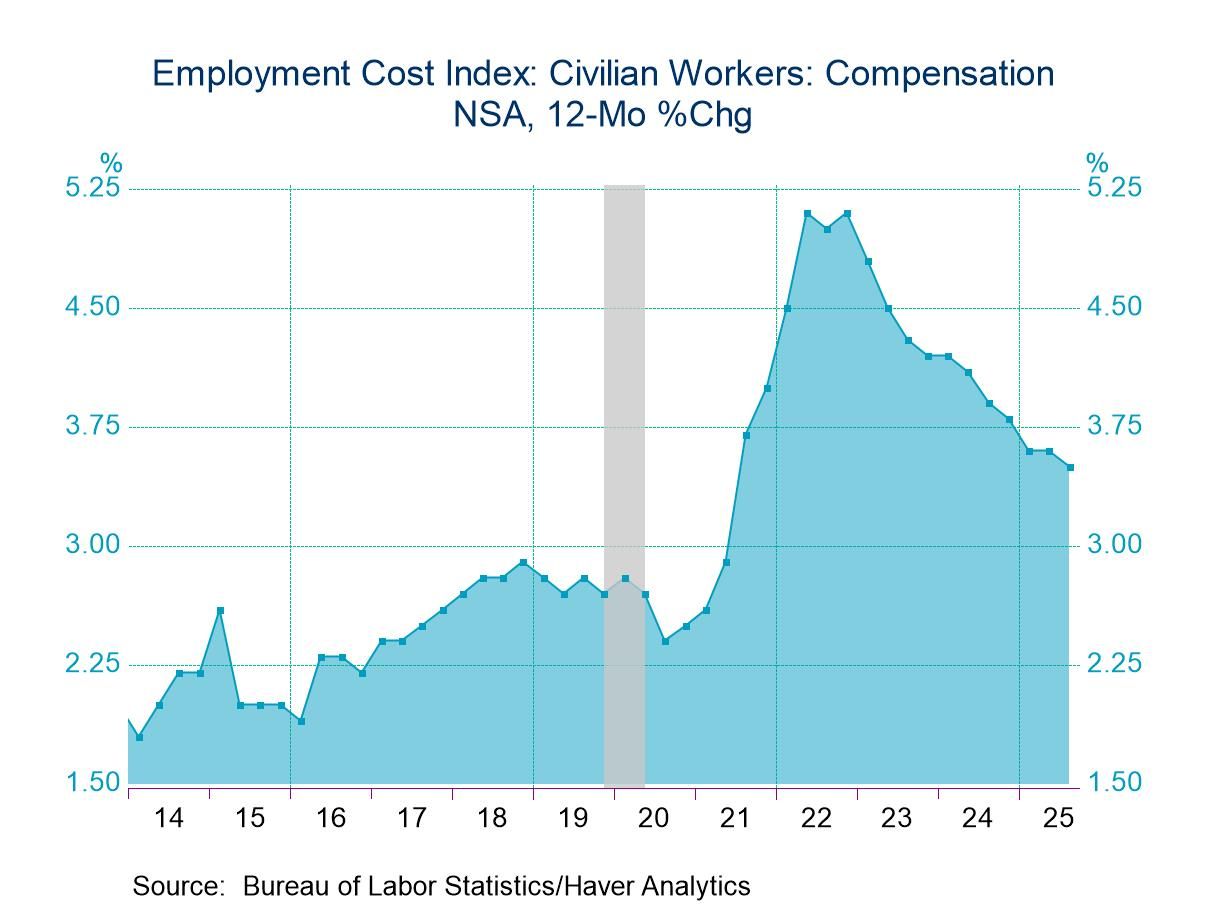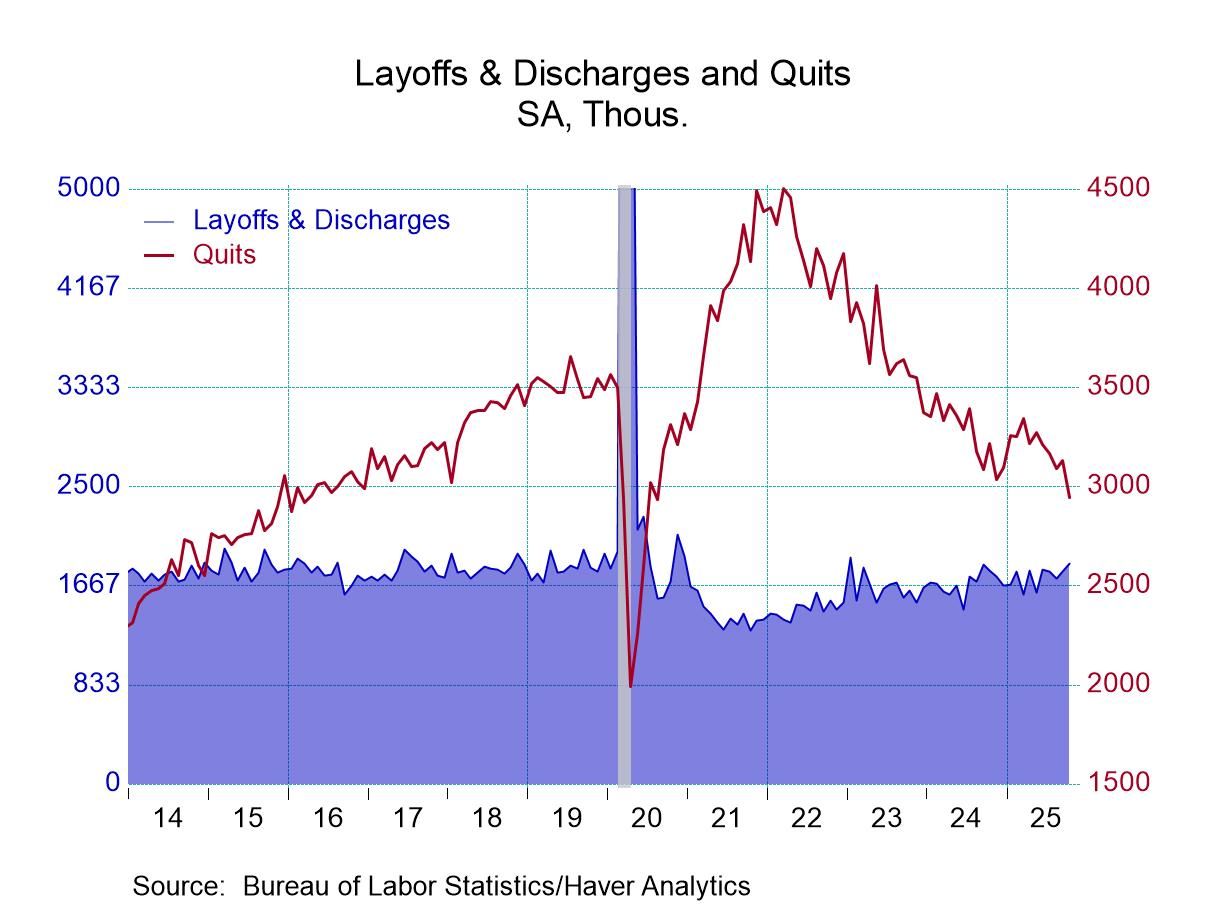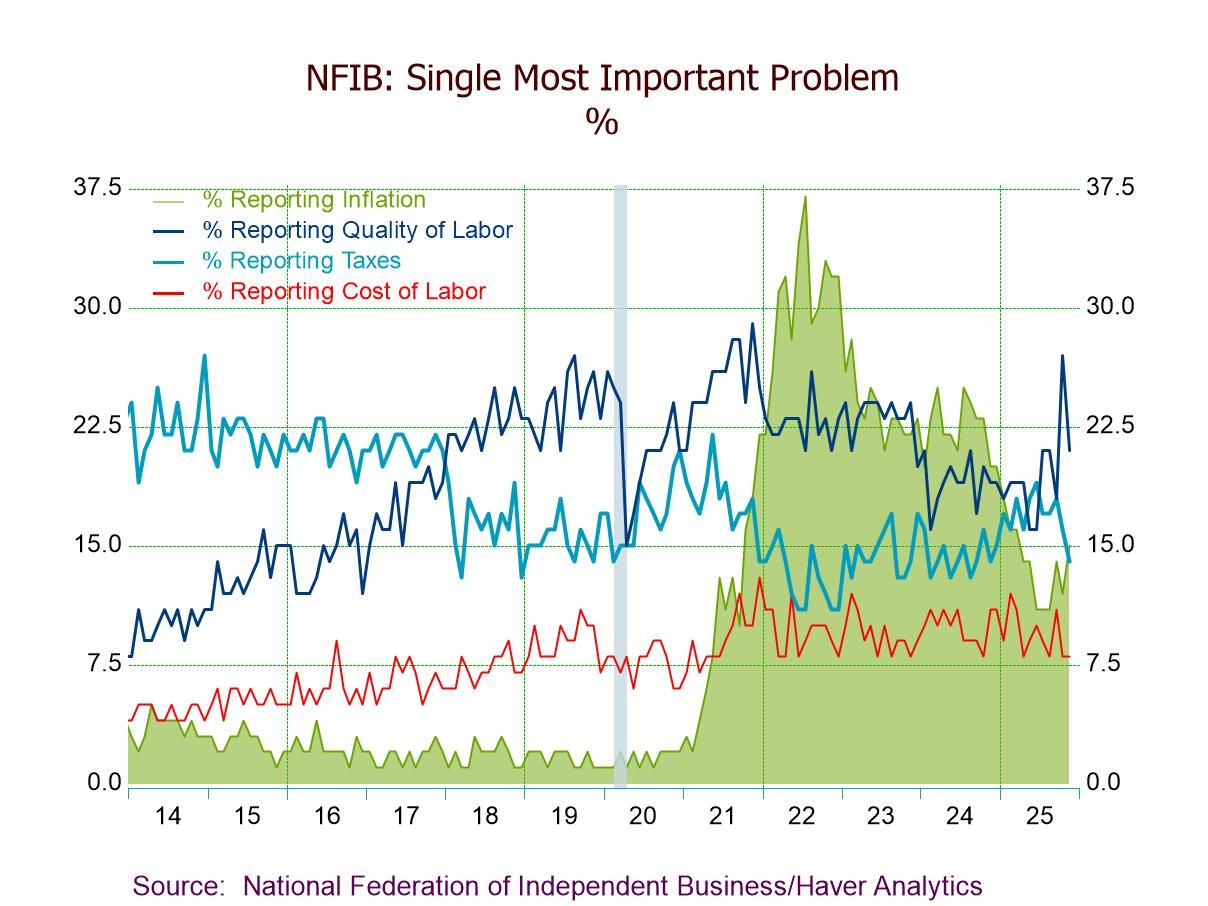 Global| Apr 08 2005
Global| Apr 08 2005Canadian Employment Up, Unemployment Down in March
Summary
The Canadian labor market has shown some further gains early in 2005, as employment has continued rising and the unemployment rate has edged lower. Employment was up 4,400 in March, following 26,200 February. Both goods and service [...]
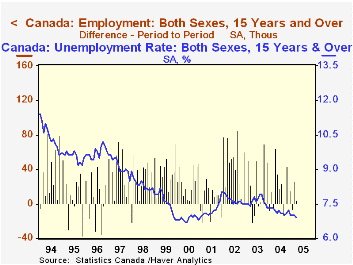
The Canadian labor market has shown some further gains early in 2005, as employment has continued rising and the unemployment rate has edged lower.
Employment was up 4,400 in March, following 26,200 February. Both goods and service industries have participated in recent advances, although both sectors have experienced occasional monthly declines.
The unemployment rate was 6.9% last month, down from the 7.0% of the previous three months and the lowest since January 2001. The rate for men was unchanged in March for a third month at 7.3%; the rate for women declined from 6.8% in February to 6.6%. This rate for women is the second lowest ever; the low was 6.4% in June 2000. Reduced labor force participation accounts for some of the recent reduction in women's "unemployment", but employment among women has continued to rise in most months.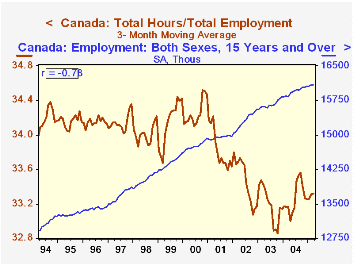
Statistics Canada also publishes data on total hours worked. These amounted to 537.1 million in the March survey reference week, almost exactly unchanged from February's total. It is sometimes the case that when the workload increases, employers will lengthen existing workers' schedules rather than hire new workers.That situation seems to hold for Canadians; over the last 10 years, the number of hours per employee has had a negative correlation of 78% with the number of employees. But also evident in the second graph is that since late 2003, both average hours and employment have tended higher. So demand for workers and longer hours have coincided. It is no accident that business productivity has flattened during this time, according to separate StatCan data.
All these data are carried in Haver's "CANSIM" database.
| CANADA Thousands, SA |
Mar 2005 | Feb 2005 | Jan 2005 | December/December||||
|---|---|---|---|---|---|---|---|
| 2004 | 2003 | 2002 | 2001 | ||||
| Employment | +4.4 | +26.6 | -5.7 | +1.4% | +1.8% | +3.9% | +0.3% |
| Goods Producing | +10.8 | -30.3 | +13.1 | +2.0% | -0.5% | +6.3% | -2.9% |
| Services Producing | -6.3 | +56.8 | -18.8 | +1.2% | +2.6% | +3.1% | +1.4% |
| Labor Force | -11.5 | +28.7 | -16.2 | +1.1% | +1.6% | +3.3% | +1.7% |
| Unemployment Rate | 6.9% | 7.0% | 7.0% | Annual Average | |||
| 7.2% | 7.6% | 7.7% | 7.2% | ||||
Carol Stone, CBE
AuthorMore in Author Profile »Carol Stone, CBE came to Haver Analytics in 2003 following more than 35 years as a financial market economist at major Wall Street financial institutions, most especially Merrill Lynch and Nomura Securities. She had broad experience in analysis and forecasting of flow-of-funds accounts, the federal budget and Federal Reserve operations. At Nomura Securities, among other duties, she developed various indicator forecasting tools and edited a daily global publication produced in London and New York for readers in Tokyo. At Haver Analytics, Carol was a member of the Research Department, aiding database managers with research and documentation efforts, as well as posting commentary on select economic reports. In addition, she conducted Ways-of-the-World, a blog on economic issues for an Episcopal-Church-affiliated website, The Geranium Farm. During her career, Carol served as an officer of the Money Marketeers and the Downtown Economists Club. She had a PhD from NYU's Stern School of Business. She lived in Brooklyn, New York, and had a weekend home on Long Island.


